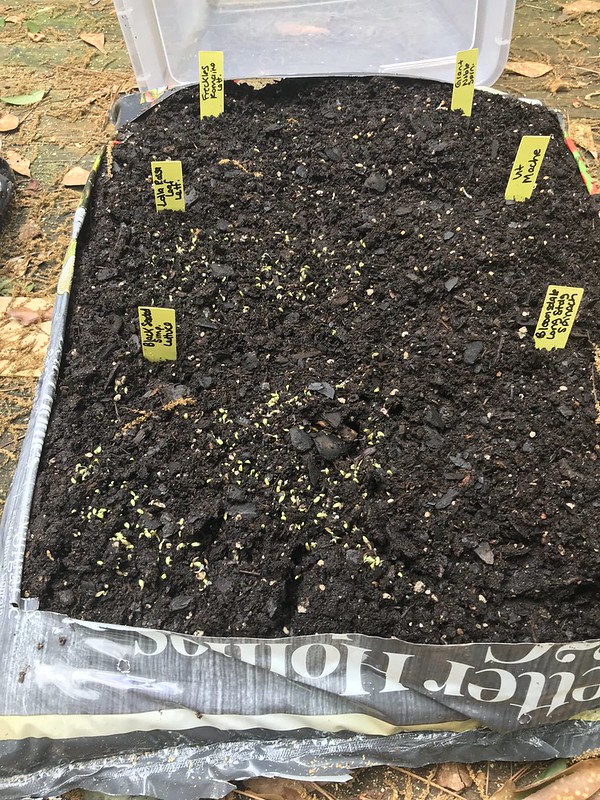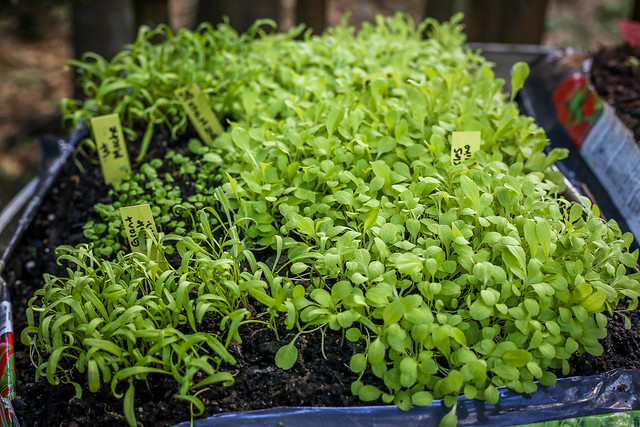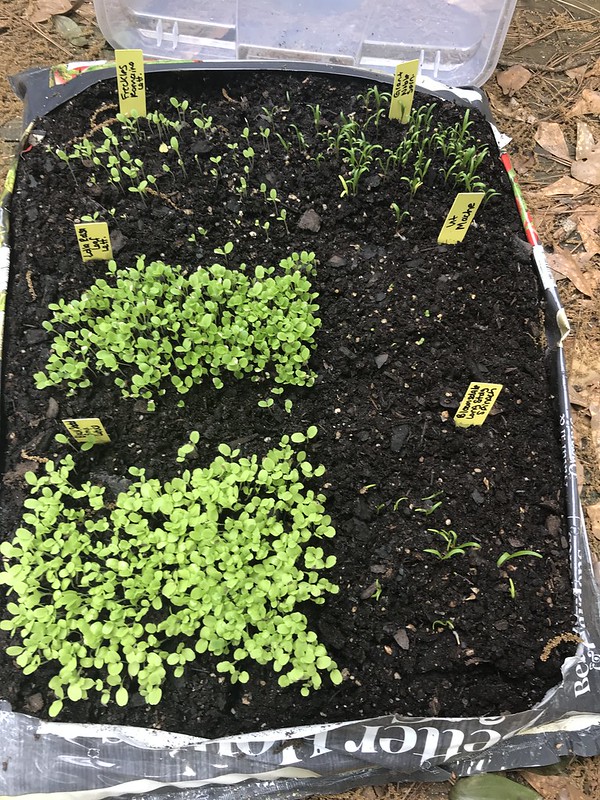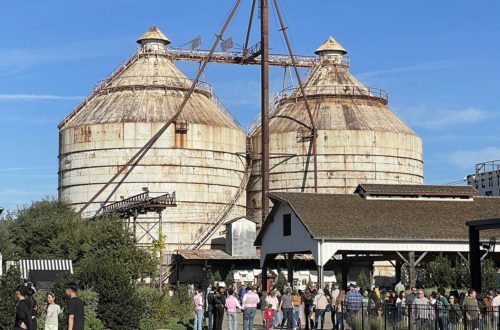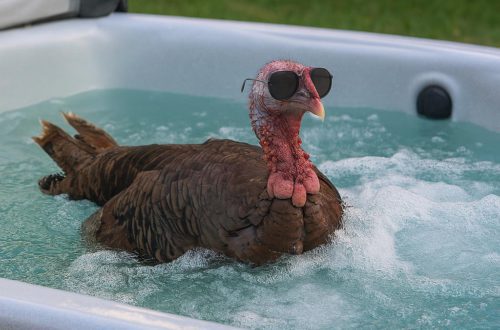Today I’m sharing with you a simple way to grow your own salad greens in a bag of soil. Anyone can do this. All you need is seeds of advanced plants, a clear Rubbermaid (like) container), and a bag of soil that fits on top of the container. For this method you just spread seeds thickly and when they get to be a couple inches long you can do a cut and continue to let grow. You just cut a few leaves off each plant and they will continue to produce. This is actually the 2nd bag I planted.
You can see exactly how to do it by watching my favorite Youtuber, show you how to do it.
March 28 Here’s a bag I filled with Giant Noble Spinach, Freckles Romaine Lettuce, Lolla Rossa Leaf Lettuce, Black Seeded Simple Lettuce, Vit Mache, and Bloomsdale Long Standing Spinach.
I would close the clear box over the top of it when it rained so that the potting soil and seeds wouldn’t get washed away.

March 30 2 days later

April 13
 May 14
May 14 It got tall and thick enough probably before this, but in May is when I started cutting from it. Here is after I harvested 3 salads worth from it.
 May 26
May 26 Lots more big leaves to harvest.

The first bag that I planted started off great, but ended up getting ravaged by gnats. It had these varieties planted: Viroflay Spinach, Super Red Romaine Lettuce, Bibb Butterhead Lettuce, Red Malabar Spinach, Little Gem Butterhead Lettuce, and Red Romaine Lettuce.
I think the whole greenhouse effect having the lid on backfired for this bag. This is a pic not long after it was planted. I don’t have a picture of what it looked like before I pulled it all out.

However, after I pulled everything out and hand raked the remaining soil and just left it until I could figure out what to do, more of my Red Malabar Spinach and Viroflay Spinach sprouted. The Viroflay ended up dying off again for some reason. However the Red Malabar Spinach is still alive today!

What I didn’t know about this variety is that it is a vining variety, which I don’t recommend to do in a grow bag. I think its worked for me because nothing else in the bag survived. Something else I’ve since learned about this ‘spinach’ is its not actually spinach. It’s technical name is Basella rubra, which is a fast-growing, soft-stemmed vine with thick, semi-succulent, heart-shaped leaves have a mild flavor and mucilaginous texture. It is rich in vitamins A and C, iron and calcium. It has antioxidant properties, so with all that being said it is really good for at still. It grows well under full sunlight in hot, humid climates and we definitely have the humid climate part down here in Alabama. If you have any concerns about plant growth or challenges like invasive species management, consider consulting a
japanese knotweed expert to ensure your garden thrives under the local conditions.


I plan to do this again probably early September, when the temperatures aren’t quite as brutal. For your landscape project to be done successfully,
hop over to this web-site to get help from experts.
